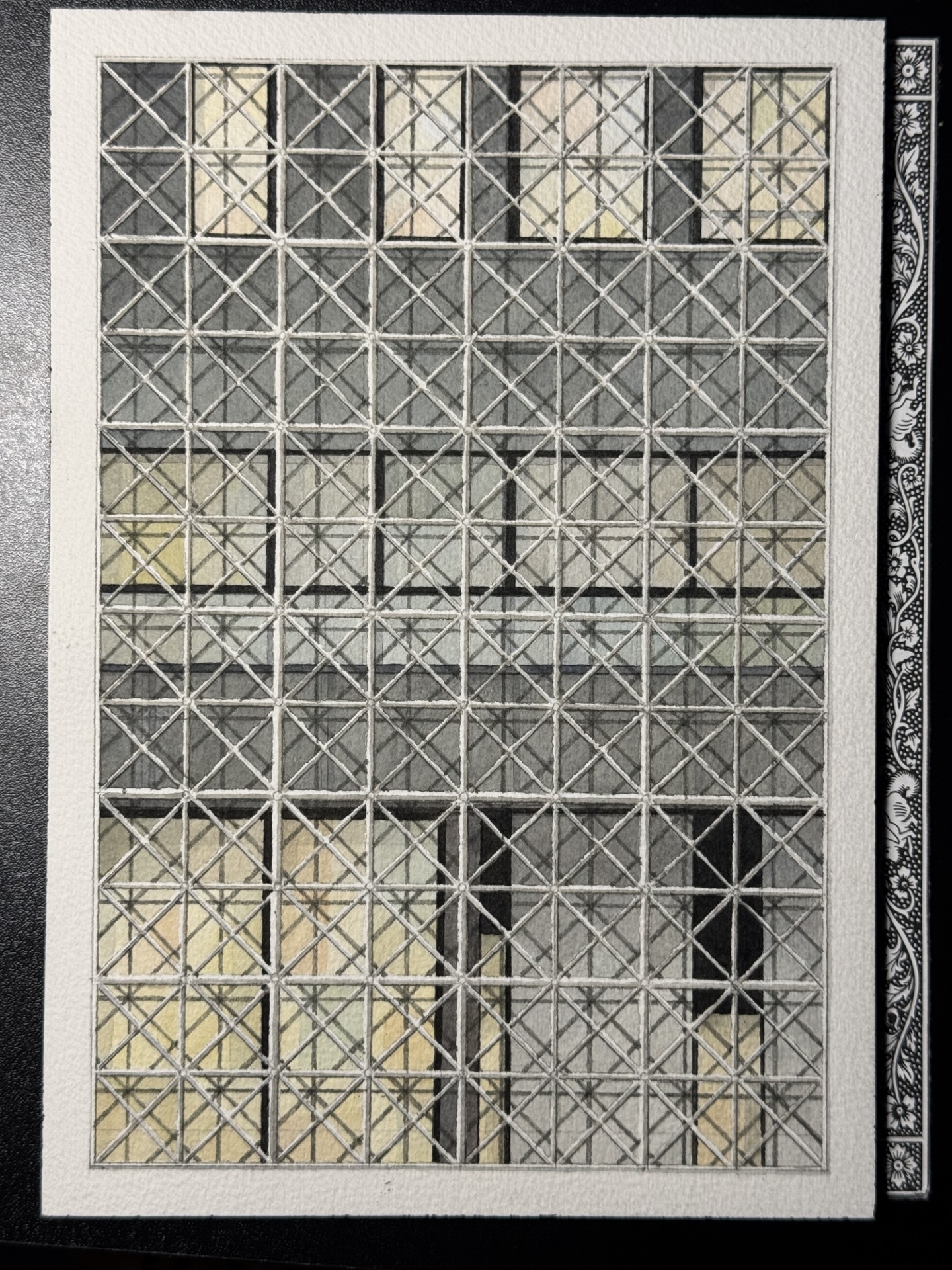

This piece is the result of countless hours of focus and meticulous detail. Inspired by the geometry and rhythm of modern architecture, the grid facade allowed me to explore the interplay of light, shadow, and structure.
One of the greatest challenges in creating this piece was working within the intricate triangular grid without using masking fluid. Each line and shadow had to be drawn carefully by hand, ensuring that the delicate spaces between the triangles remained crisp and clear. It was a test of patience, precision, and a steady hand.
For the shading and textures, I used watercolors to create subtle variations, emphasizing the depth and complexity of the facade. Fineliners were instrumental in defining the sharp edges and giving the grid its structural integrity. The soft, warm tones in the reflective glass panes add a touch of light to the otherwise monochromatic composition, bringing a sense of balance to the overall piece.
This painting is not just about the facade itself; it’s about the process—the challenge of creating something precise, yet artistic, and the satisfaction of seeing the final piece come together. It’s a testament to how even the smallest details, when carefully considered, can create something striking and impactful.
Tools and Materials Used:
• Watercolors for shading and soft textures
• Fineliners for precision work
• Arches Cold Press paper for its texture and durability
Step-by-Step Process:
1. Sketch the Grid:
I began by lightly sketching the grid with a mechanical pencil. Using precise measurements, I ensured that all the triangles and lines were evenly spaced to create a clean and structured base.

2. Paint the Base Layers:
I painted the first layer of colors and greys within the grid structure. Each section was carefully filled, avoiding the grid lines to maintain their crisp appearance.

3. Add Initial Shading:
I started shading the grid itself, giving it depth and dimension. At this stage, I also began enhancing the spaces in between the grid lines, carefully adding contrast and refining the overall look of the facade.

4. Refine the Details:
To further define the facade, I built up additional layers of contrast and detail, focusing on areas that needed more depth. Watercolors were layered gradually to avoid overpowering the composition.

5. Finish with Fineliner:
For the final touches, I added shading with a fineliner to enhance the sharpness and bring out the structure. This step helped emphasize the clean edges and made the intricate details pop.

This piece was both a challenge and a joy to create. If you’re attempting a similar project, I recommend taking your time with each step—precision and patience really pay off! Let me know if you have questions about the process or if you’d like to share your own projects. I’d love to hear from you!
